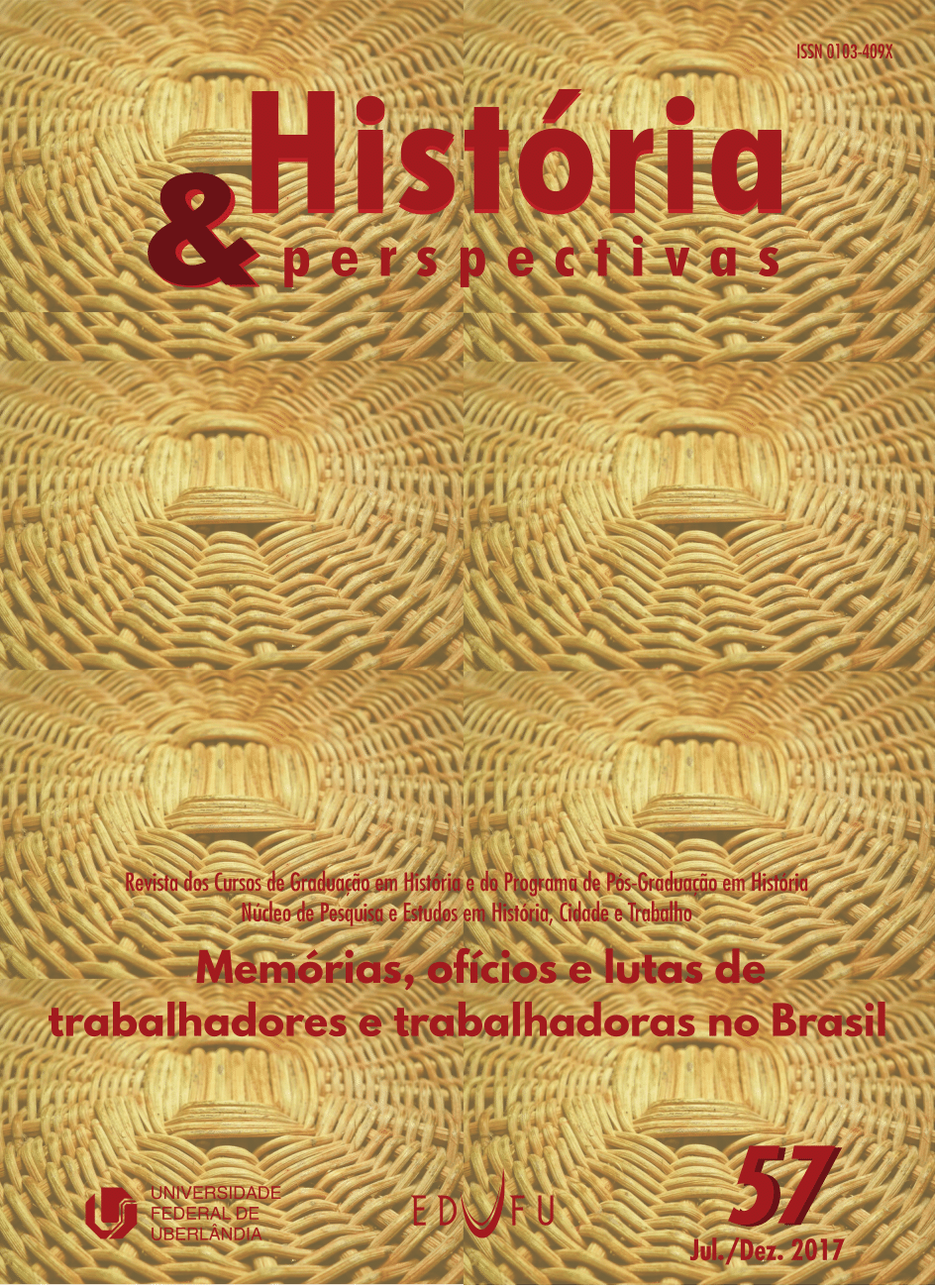A trama têxtil de Villa Platina: Profissões do vestuário no sertão de Minas
DOI:
https://doi.org/10.14393/HeP-v30n57-2017-2Abstract
Este artigo analisa a presença de profissionais do vestuário (fiandeiras, tecelãs, costureiras, alfaiates, comerciantes, etc.) no município de Villa Platina, tendo como fonte documental os livros que compõem o Recenseamento Municipal de 1904. Essa vila localiza-se na região do Triângulo Mineiro, antigo "Sertão da Farinha Podre", Minas Gerais. O objetivo é compreender o contexto cultural dessa vila e a relação dessa sociedade com seu sistema de vestuário e com o comércio direcionado a esse ramo. Para isso, investigamos as origens, o nível de alfabetização, as relações de parentesco e os locais de residências dos profissionais e suas relações com o aprendizado e com o exercício dessa profissão. Nessa sociedade já era visível a presença de imigrantes introduzindo novas técnicas de costura, um dos fatores a colaborar para a redefinição da tradição da manufatura de roupas local. Como procedimento teórico-metodológico a investigação parte do entrecruzamento de várias fontes numa perspectiva dialética para situar historicamente a vila e as atividades dos profissionais do vestuário.
Palavras-chave: Profissões do vestuário. Imigração. Modernidade. Villa Platina.
Abstract: This article analyzes the presence of garment workers (spinners, weavers, seamstresses, tailors, etc.) in the municipality of Villa Platina. It has the 1904 county census as the primary source of investigation. This village is located in the Triângulo Mineiro region, former "Hinterland of rotten flour", Minas Gerais. The objective is to understand the cultural context of this village and the relationship of this society with the clothing production and commerce. Therefore, we investigate the origins, the level of literacy, kinship relations and the residential sites of professionals, as well as their relation with learning and the pursuit of this profession. In this society it was already visible the presence of immigrants introducing new sewing techniques, one of the factors that contributed to the redefinition of the tradition of local clothing manufacturing. The research begins with a description of the census and relates it with other sources, with a dialectic perspective, to better situate historically the village and the clothing professional's activities.
Keywords: Clothing professions. Immigration. Modernity.Villa Platina.
Downloads
Published
Issue
Section
License
Direitos Autorais para artigos publicados nesta revista são do autor, com direitos de primeira publicação para a revista. Em virtude de aparecerem em revista de acesso público, os artigos são de uso gratuito, com atribuições próprias, em aplicações educacionais e não-comerciais.
Todo conteúdo da Revista História & Perspectivas de http://www.seer.ufu.br/index.php/historiaperspectivas está licenciado com uma Licença Creative Commons - Atribuição-NãoComercial-CompartilhaIgual 4.0 Internacional.

